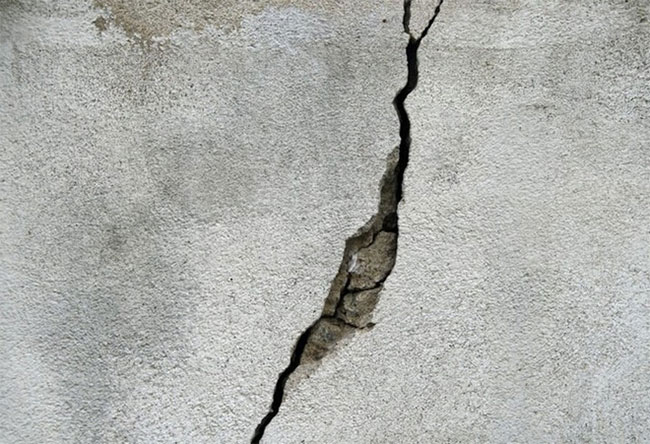Scientists have successfully developed a new type of concrete that is less prone to cracking than conventional concrete
Russian scientists have successfully developed a new form of concrete that is more durable, thus creating stronger structures and buildings .
According to New Atlas , the secret of the new concrete lies in the mixture that makes up it , where scientists have replaced 40% of cement binders with other environmentally friendly materials, through It increases the cohesion and helps the concrete have better elasticity.

The secret of the new concrete lies in the mixture that makes up it.
Most of today's commercial concrete is made by combining aggregates including gravel or other solid materials with cement (a powder saturated with water to form a thick paste.) As it became a familiar material in the modern world, it was invented in ancient Rome when the Romans at that time made concrete by mixing cement with gravel and volcanic ash to form cubes.
Concrete can be used alone or in combination with steel frames to create so-called reinforced concrete . Thanks to the reinforcement, concrete becomes more durable and also a bit more flexible. However there is a big limitation to the use of reinforced concrete. That is the variance when pouring concrete around the steel frame. Any impact factors such as moisture or foreign objects attached to the reinforcement may contain bacteria and may weaken the concrete structure over time. Once cracks appear on the concrete, that's when trouble begins.

A crack in the concrete.
These limitations of concrete prompt scientists from the Military Research Center of the Far Eastern Federal University (Russia) to find a new concrete. As a result, they found a concrete mixture with greater elasticity, even more resistant to cracking 6-9 times than traditional concrete.
Concrete creates great environmental costs, not only from cement production but also from erosion over time. The Guardian page earlier this year quoted experts as recommending the use of less concrete in construction projects. This may sound unrealistic, but with the way of Russian scientists, they can realize this.
Russian scientists have reduced the amount of cement by 40% to create concrete, thereby creating a new concrete more environmentally friendly and cheaper than conventional concrete.Cement replacement is the main material of natural waste , such as rice husks, waste from crushed limestone and silica sand. Silica is a mineral that has many shapes like crystals (quartz) and is also a sand in nature. The sand grains on the beach are mostly silica sand and finely ground calcium particles from corals and other marine life.
Scientists have long studied rice husks as an alternative or complement to the fly ash of the coal industry, a product of coal mining. Ash from rice husks is more elastic and helps to offset emissions. Meanwhile crushed limestone from quarries. The reuse of waste from limestone mines and marble dust will help reduce environmental impact, while increasing the tensile strength of concrete.
Although the initial tests are showing quite positive results, it is not clear whether the new concrete with 40% less cement is suitable for construction of large-scale, load-bearing projects. But overall this more friendly concrete promises to be a great alternative to building bridges with the ability to bend but still retain its shape.
- Development of new mixed concrete from waste from thermal power industry
- Special spray concrete helps buildings against earthquakes
- Experience of pouring fresh and sunny concrete without cracking
- Develop new mixed concrete from thermal power industry waste
- Special concrete aerosols help prevent earthquakes
- Self-adhesive concrete
- Raise the quality of concrete from the sea urchin backbone
- Concrete bending - this kind of material can create revolution in the construction industry
- Concrete is devastatingly natural as much as plastic waste
- The new solution uses sparks to recycle concrete
- Story of concrete - king of construction materials
- He tested the self-healing concrete potholes
- Scientists have successfully developed a cancer diagnosis method that is 10,000 times more sensitive now
- Polymer concrete: concrete solution
 The US company is about to build a supersonic passenger plane of 6,000km / h
The US company is about to build a supersonic passenger plane of 6,000km / h Japan develops avatar robot as in fiction film
Japan develops avatar robot as in fiction film Australia tested the world's first mango picking robot
Australia tested the world's first mango picking robot America develops technology to separate water from animal waste
America develops technology to separate water from animal waste